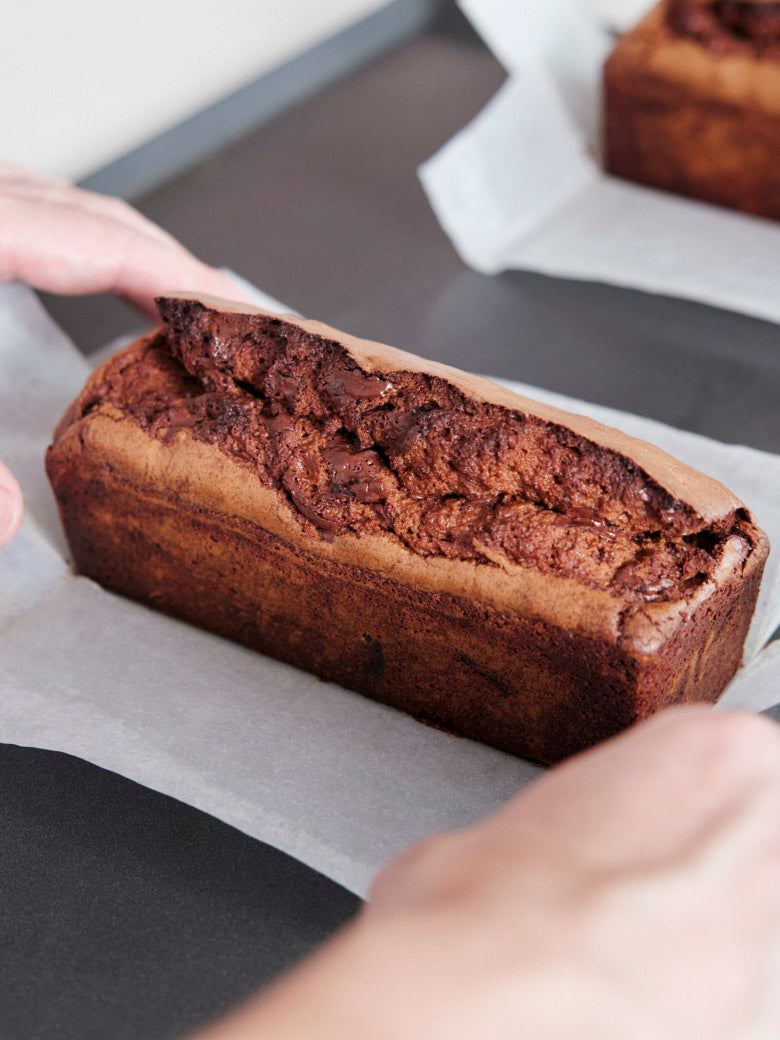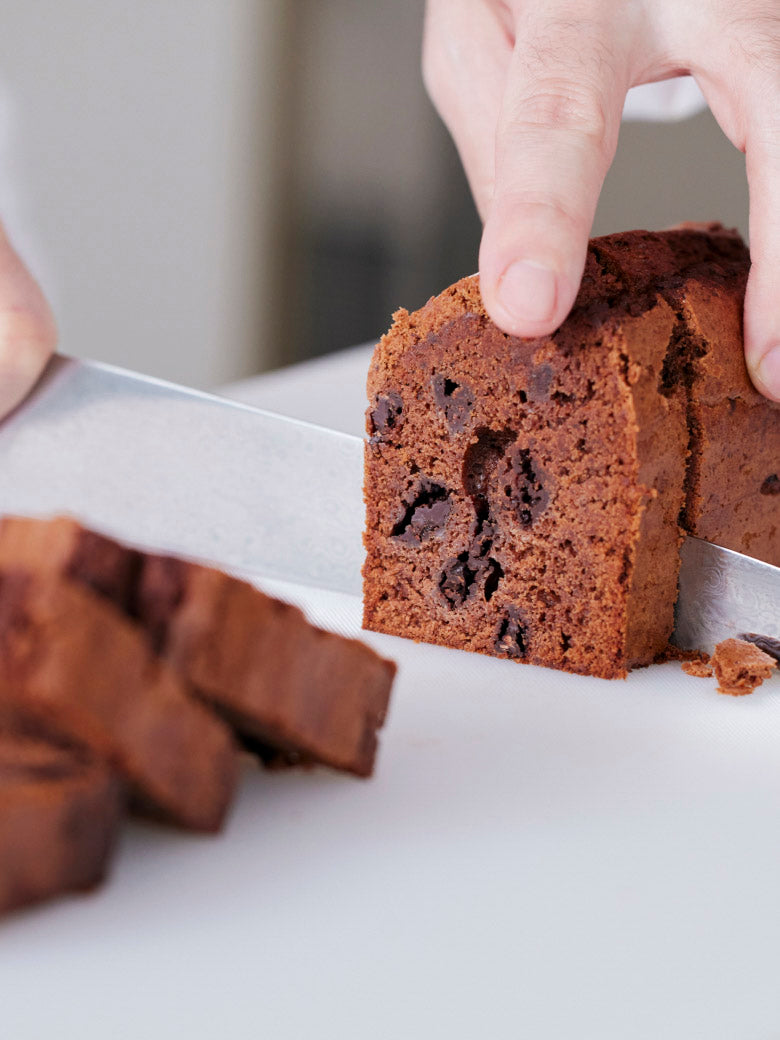Plaisir - chocolat
Plaisir - chocolat
Gâteau de voyage chocolat
The light texture of this cake belies its surprisingly intense flavor. We’ve struck a balance that should make it irresistible even to those who claim to dislike heavy chocolate confections. Aztec mythology tells us that chocolate is a gift from the gods, and this temptation—with flavors that linger sweetly in the mouth—is certainly a worthy successor!
[About delivery]
On the cart screen, select your desired delivery date and time.
Please note that we cannot accept requests for delivery dates during the year-end and New Year holidays (December 24th to January 15th).
Shipping is a flat rate of 1,000 yen nationwide (for refrigerated delivery). The shipping fee includes consumption tax and is applied per delivery address. For orders with multiple delivery addresses, shipping fees will be charged for each delivery address. If you purchase three or more cakes per delivery address, the shipping fee will be waived.
Couldn't load pickup availability
Product Summary
Internal capacity
1 piece (350g)
Raw materials
Chocolate(Made in France), sugar, whole egg, butter, wheat flour, almond powder, liqueur, vanilla paste, salt/raising agent, emulsifier, flavoring (contains milk, egg, wheat, almond, soy)
Allergy
Wheat, contains milk, egg, soy, almond
Expiration date
After thawing, please consume as soon as possible before the flavor is lost.
Preservation method
Store frozen (below -18℃)
After thawing, we recommend refrigerating.
Serving suggestion
This cake should be stored in the refrigerator, or even in the freezer in summer. Different flavors come to the forefront depending on how long it’s been allowed to thaw. The concentrated richness of the coarsely chopped chocolate is most prominent straight out of the fridge or freezer, while the aromas of cognac and vanilla emerge to blend seamlessly with the chocolate when it nears room temperature. The closer to room temperature, the smoother the texture. It is the perfect delicacy to share with a dear friend over a glass of wine.
A sweet temptation that blessed God

How IT STARTED
Beginning
"What is a dessert?"
While thinking about the sweets following Gateau de Boyage Citron, we have to face the work again.
"Why is the French cuisine course in the first place where desserts are always provided?"

This may be due to the difference in food culture.
In Japanese dishes, sugar and salt are used naturally, while the food is naturally sweet, while France does not use sugar for dishes and is often salty. The dessert may have been given the role of taking sugar firmly.
Art de vivre
Life full of richness
But what is more interesting for us is that the same is happening not only in restaurants but also in ordinary households. Although there are a wide variety of sweet yogurt and fruits, most homes eat sweets after dinner.
"If you don't eat sweets, your meal will not end."
I hear that many people think so. In other words, decorating the finale of intimate time with members surrounding the dining table, including family members, may be the essence of desserts.
France has an advanced phrase "Art de Vivre". The nuance is like an English "lifestyle", but I think the sense of choosing the word "art = art" is very French.

Finding beauty in casual everyday life and coloring richly. That is the "living technology" that the French people passed in to their ancestors.
The end of the last piece of a fun meal time with a sweet dessert can also be called "Art de Vivre".
So, can we propose what kind of dessert suitable for decorating meals at home?
Brigade de Cuisine
Royal teamwork
"Expressing the world of" real "gastronomy that has never existed in Japan."
We want to realize that dream through the atelier Koto. At that time, the key key is teamwork in the kitchen.
In Japanese restaurants, there is a strong vertical society where the chef reigns as an absolute top. Therefore, it is often the case that the one below can not demonstrate the creativity.
But the teamwork in the kitchen I experienced in France is even more round.

Those with unparalleled personality demonstrated the technical skills, sense, and the high awareness of French fashion in the right place in the right place.
If you look at the dessert, the symbolic thing is that every restaurant has Chocolatier. In Japan, patissiers are often served as patissiers, but making chocolate confectionery in French restaurants is the sanctuary of experts. It also shows how delicate and deep is the work of making delicious chocolate.
Our team has no chocolatier yet. But challenging chocolate confectionery with its own position in a French kitchen may be an important step in expressing our "round teamwork".
"Yes, let's make rich chocolate sweets that will be captivated once you eat."
Philosophy
Cooking is philosophy
Thus, the recipe for Gato de Boyage Chocolat has begun. Patissier, who loved sweets more than anyone in our team, played the role of flag.
The richness of the chocolate that is thrilled and the light mouthfeel yet. What I aimed for was such a taste that was unlikely before.

For this reason, the amount of materials was adjusted in one grams, and how to mix on the days of coming and coming. As a result, the amount of powder is smaller than the general chocolate cake, and the ratio of chocolate is higher. In the secret taste, Cognac and Vanilla were included.
I think that every time I work out the ideal answer = tasting, I think that the cuisine is philosophy.


To be honest, I'm not good at rich and heavy chocolate confectionery.
Even I have created a confidence that I really want to eat again.
Mythology
Thinking about myths
The history of chocolate is very old.
Cacao cultivation began on the continent of South America thousands of years, and in the 13th century, it developed as a beverage in the glory of Mexico.

In the Aztec mythology, there is a story that the agricultural god named Ketzarcoratl brought back cacao from heaven and blessed humanity.
Therefore, in Aztec, cacao was a symbol of mysterious power and was dedicated to the gods.
Cacao spread to Europe in the early 16th century when the Aztec kingdom was destroyed by the Spanish invasion.
Since then, cacao has evolved into desserts that are loved around the world, such as cocoa and chocolate, and keeps people in a sweet temptation.

I hope you can decorate the finale of time with this chocolate cake while thinking of the mystery of the present.
The compatibility with wine is also outstanding.









